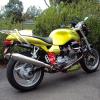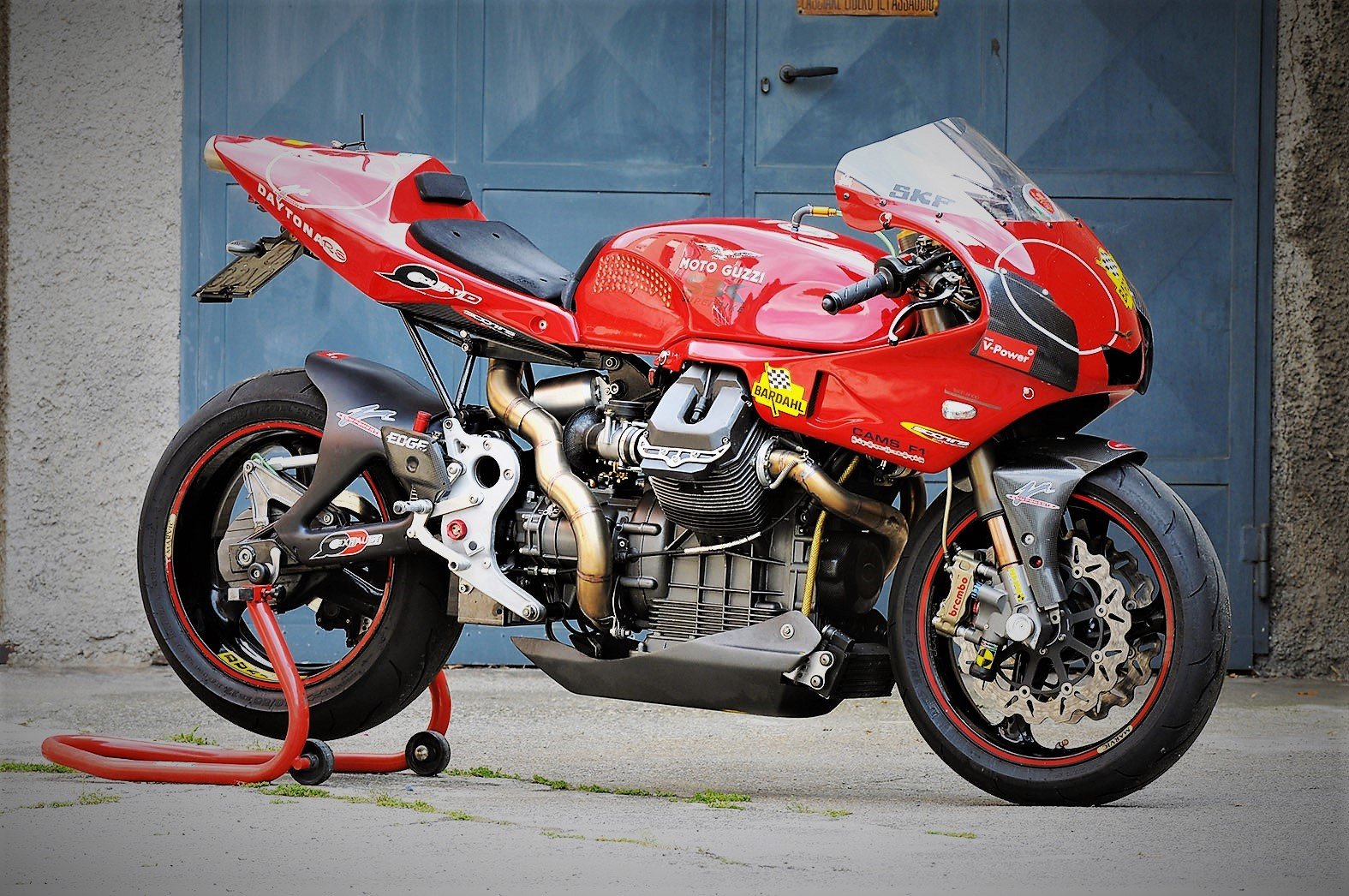-
Posts
5,449 -
Joined
-
Last visited
-
Days Won
276
Content Type
Profiles
Forums
Events
Gallery
Community Map
Everything posted by Lucky Phil
-

Rear Wheel Spacers and Washers - Rookie Mistake
Lucky Phil replied to WDGUZZI's topic in Technical Topics
Spacer goes inside the bevel box. Phil -
I guess you pick and choose your complications these days. Life's a lot simpler and just as satisfying when you "dont know what you don't know". As a kid in the supermarket I had a choice of 3 tomato sauces and was happy as a clam with that. Now when I go into the supermarket I'm faced with at least 50 choices of meat sauces and apart from choice anxiety there also the anxiety of thinking that maybe I made a wrong choice. All that matters is you enjoy what you now have.
-

I just found the perfect jacket to ride my Moto Guzzi!
Lucky Phil replied to p6x's topic in Personal Ads
It's funny I suppose, I have this position where I refuse to wear any "branded" clothing unless I get it for free. I'm not paying my hard earner for the privilege of giving free advertising to a corporate entity. I'm not talking about the consequential logos on a polo shirt or the tag on a pair of Levi jeans but the sort of Jacket the OP has shown and similar. Nope, you want me to be a walking Billboard then you foot the bill and I'll wear it, if I like it that is. It kind of started years ago when I was at a bike show and Australian Motorcycle news had a stand and on the stand was a pile of stickers and I thought I'll grab one of those for decorating my toolbox. The Journo at the stand then said that's $2 mate as I walked away. I turned around and put it back then let him know how I felt about me paying my money to advertise his rag at no cost to them. Baseball caps are another surprise these days. Weren't baseball caps giveaways at the start? They were here for sure. Then some corporate advertising clown found out that punters will hand over now, what $50 or more for the privilege of providing free advertising for a multinational or a sporting club owned by a gazillionair! To cap it off we now have the Guzzi lawyers trolling the world threatening Guzzi Forums with legal action for using "their" corporate property. So you pay to advertise their product for free and in return they crap on your good intentions from a great heigh. Not restricted to Guzzi I know. So it's the middle digit to them from me, lol. -
Even with my old doser grinder I never ground more coffee than what I was going to immediately use. The beans are kept in a sealed container after opening and I dont fill the bean hopper, only about 1/4 full at a time. Phil
-
A little off track I know but interesting and one for Audiomick, right up his alley. Check out the other engine configurations as well.
-
Our Christmas present to ourselves. We've had them for a month or so but waited till the official day to launch. Phi
-
Set up today and pulling great shots. Phil
-

Sporti & Daytona Fuel Level Sender Replacement?
Lucky Phil replied to Weegie's topic in Technical Topics
Id mod the taps for you John as now I have the mill the hardest part is easy but the postage would be a killer. Phil -

Moto Guzzi Daytona at MPH (Houston) to be prepped up for sale by owner.
Lucky Phil replied to p6x's topic in 24/7 V11
What docc she has no time for "art"? Phil -

Sporti & Daytona Fuel Level Sender Replacement?
Lucky Phil replied to Weegie's topic in Technical Topics
Make sure you modify your new taps John with Viton/fkm seals or they won't last. I did a thread on it a while back. I don't think the float type sender will work in the v11 tank as the float diameter is too large to go through the std sender tank fitting. I may be wrong but if it's that easy then I'm on board as well. Phil EDIT..... I just measured to ID of the sender unit adaptor, 14.3mm -

Moto Guzzi Daytona at MPH (Houston) to be prepped up for sale by owner.
Lucky Phil replied to p6x's topic in 24/7 V11
They do. https://www.mgcycle.com/index.php?main_page=product_info&cPath=193&products_id=1698 Clutch pull will be highly dependant on the clutch cable condition esp if the bikes been idle for years. Phil -
No idea. It's a video of "I'm your man" a live concert of Cohens work by various artists inc Nick Cave, Rufus and Martha Wainwright Anthony from Anthony and the Johnstons and others. Quite brilliant performances of Leonard Cohens work. To fully appreciate his work you need to listen to other performers versions I think. Brilliant poet and song writer but less so as a performer. Phil
-

Throttle Position Sensor- need some pics
Lucky Phil replied to Jazzamoto's topic in Technical Topics
I don't know what you mean by "fooling around with" The CA cycle works TPS is a quality replacement for whatever your model of V11 used originally and thats what you should stick with. Phil -

Throttle Position Sensor- need some pics
Lucky Phil replied to Jazzamoto's topic in Technical Topics
California Cycle Works as previously mentioned. Phil -

Throttle Position Sensor- need some pics
Lucky Phil replied to Jazzamoto's topic in Technical Topics
I didn't think there was ever any question with regards to this. Same as Ducati, early non linier and later linier. One has adjustment slots and one doesn't. The earlier PF09 large style are also non linier. Phil -
I'm sure wondering about the length of that cam chain tensioner adjustment bolt. Doesn't look stock to me which leaves questions, maybe. Spares are the issue and it's the sort of bike where specialised bespoke parts were used unique to that bike. Brakes and suspension are all easy but body stuff ,instruments and engine are the question. The earlier Jota series naked bikes would be a lot easier with regards to parts. Phil
-

R.I.P. Robert Pirsig
Lucky Phil replied to guzzigary's topic in Special place for banter and conversation
I read the book years ago and the saddest thing was learning at the end his son was murdered in a totally random knife attach when he was in his early twenties from memory. Felt like you got to know the kid well in the book then this happened. Phil -
I remember these when they were new. A friend of mine had one. Parts were a nightmare even then, don't know about now. Most vivid memories was vibration and LOTS of mechanical noise from the engine. A mint one at the right price might be worth considering if you're into quirky Italian motorcycles that won't see too many miles. Phil
-
I think I can answer that with a no it didn't. Homespun engineering without a purpose. Phil
-
It's not and never was with anyone with any sense. Why the hell would you Swiss cheese the dampers? Or replace them with something else/softer? A slight smear of rubber grease to ease the assembly back together is all thats needed and then don't mess with it. Phil
-
You can buy it here but it's expensive. Not sure they sold the del sol here. Phil
-
Cost is prohibitive for us docc. That there's a $50aud tube of grease by the time we get it and here they charge a lot more for the product itself. I did some research on buying it a few years ago Phil




